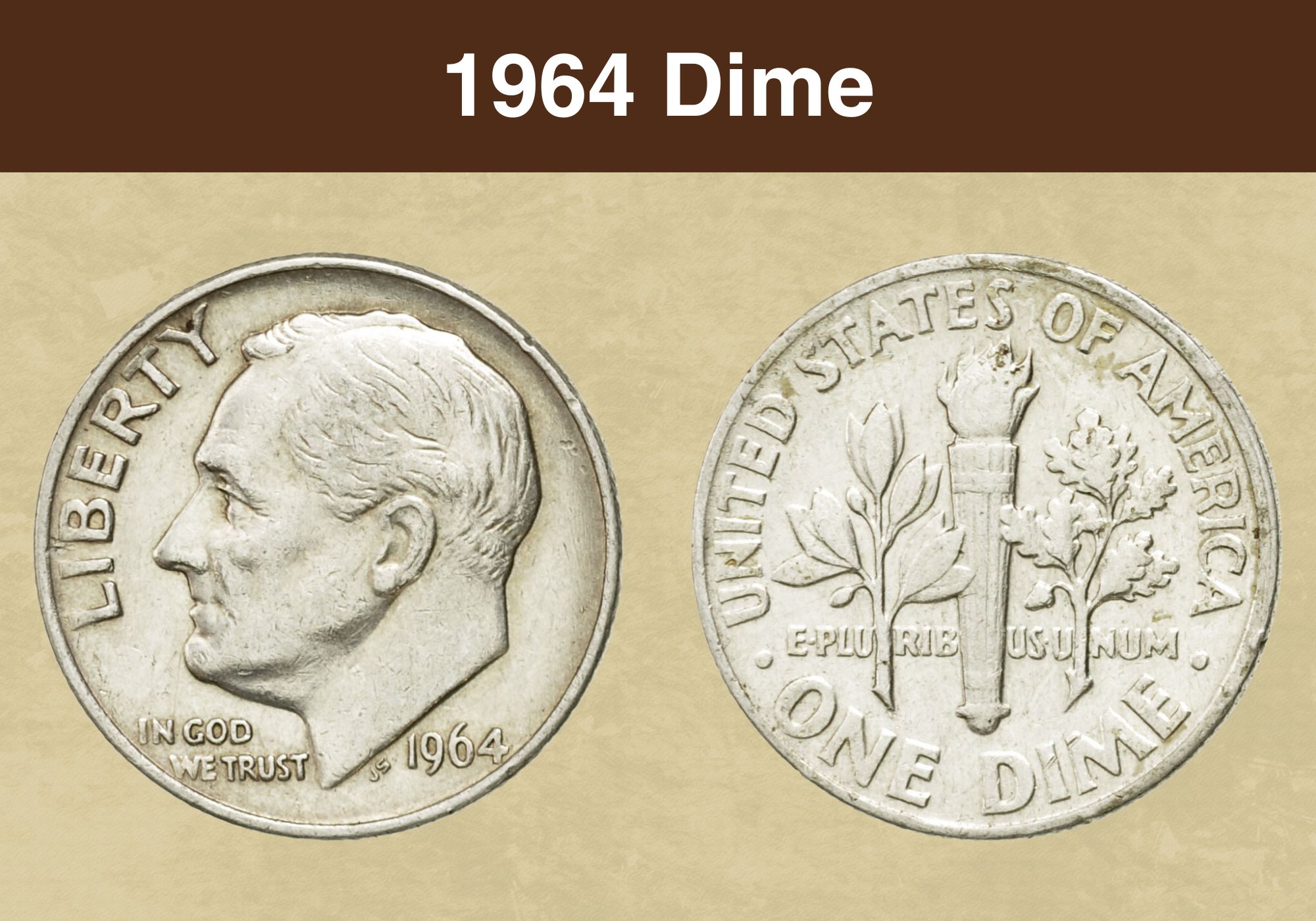
Coin Value Contents Table
Are you looking to add Roosevelt silver dimes to your collection? Or, are you considering selling your dimes, hoping to make a fortune?
Roosevelt dimes have been minted for more than 70 years, and they serve as a reminder of a strong and resilient president who led the country through the Great Depression and World War II.
The truth is the U.S. dime, or ten-cent coin is not very popular among collectors. But the ones with the 1964 date might be special as they were the last circulating dimes made from 90% silver.
A 1964 dime in mint, uncirculated state can be worth hundreds of dollars and one with full bands might fetch even more. Dimes with unique errors can easily earn thousands of dollars depending on the coin’s condition.
So, let’s jump in and learn more about the 1964 dime value so you can make a smart decision whether you are looking to buy or sell.
1964 Dime Value Chart |
||||
| Mint Mark | Good | Fine | Extremely Fine | Uncirculated |
| 1964 No Mint Mark Dime Value | $2.98 | $4.06 | $4.59 | $5.24 |
| 1964 D Dime Value | $2.98 | $4.06 | $4.59 | $5.24 |
| 1964 Proof (P) Dime Value | – | – | – | $150 |
| 1964 SMS Dime Value | – | – | – | $20,000 |
History of the 1964 Dime
The 1964 dime is part of the Roosevelt dime series, a circulating coin minted to commemorate one of America’s most popular presidents.
The dime was named after the March of Dimes, a vibrant movement President Franklin Delano Roosevelt founded in his fight against polio. He contracted polio and fought passionately to eradicate the crippling disease.
President Roosevelt died of a cerebral hemorrhage on April 12, 1945. In May of that same year, Treasury Secretary Henry Morgenthau, commissioned the minting of a coin to commemorate the fallen president.
The new Roosevelt dime would replace the Mercury dime, which had circulated for for twenty-five years.
A lot of controversy and design changes accompanied the making of the Roosevelt dime.
Many agreed that FDR should be honoured on one of the country’s currencies for his efforts in leading the country through war and economic depression. Others argued that Roosevelt’s contribution could not be compared to the Founding Fathers such as Lincoln, Jefferson and Washington.
Eventually, the new dime was struck in January 1946 and went into circulation that same month. The coin comprised 90 percent silver and an additional 10 percent copper to strengthen the silver content.
The 1960s were a game-changer in coinage history. A silver shortage led to people hoarding many silver coins hoping to cash in later or to melt the coin for its silver value. The U.S. Mint responded by minting even more coins, resulting in an oversupply.
Faced with a continuing severe silver shortage, the U.S. Treasury Department halted the production of silver coins in 1964 and authorized the Mint to use a base metal instead. From 1965 to date, Roosevelt dimes comprise a copper core and copper-nickel clad.
Another interesting fact is that Congress froze the 1964 date on Roosevelt coins, allowing coins dated 1964 to be minted well into 1966. This, too, contributed to the coin’s exceptionally high mintage.
Also read: Top 17 Most Valuable Roosevelt Dimes Worth Money
Features of the 1964 Dime
Let’s now look at the unique attributes of the 1964 Roosevelt dime.
The Obverse of the 1964 Dime
Chief engraver John R. Sinnock designed the obverse and reverse of the Roosevelt dime. The design has remained unchanged since the coin was first struck in 1946.
The coin’s obverse features the left-facing portrait of Franklin Delano Roosevelt, the 32nd president of the United States of America.
The word LIBERTY appears along the rim of the coin’s left horn.
You also see the motto IN GOD WE TRUST toward the bottom on the left side of Roosevelt’s truncated neck. The date, 1964, appears on the right side.
In addition, you will notice the initials JS at the tip of Roosevelt’s truncated neck. These initials were controversial as many Americans assumed they represented Joseph Stalin, the Soviet dictator.
The Reverse of the 1964 Dime
On the reverse of the 1964 dime, you will find a blazing torch and an olive and oak branch.
The blazing torch represents liberty, while the olive branch on the left symbolizes peace. The oak branch on the right symbolizes strength and independence.
You will notice that the torch has horizontal bands at the top and bottom and vertical ones too. These bands may seem insignificant, but in the numismatic world, they play an important role in determining the value of a Roosevelt dime.
The motto E PLURIBUS UNUM appears across the coin’s center. The country’s name appears around the top rim, while the coin’s denomination, ONE DIME, is imprinted around the lower rim.
Other Features of the 1964 Dime
The 1964 Roosevelt dime comprises 90% Silver and 10% Copper. It weighs 2.50 grams and measures 17.90 millimetres in diameter.
The coin’s Actual Silver Weight (ASW) is 0.0723 and has a fineness rating 0.9. It has a reeded edge.
The 1964 dime was minted in Philadelphia, Denver and San Francisco. The coins from Philadelphia and San Francisco do not have a mint mark.
But, coins minted in Denver have the mint mark ‘D,’ which you will notice on the left toward the tip of the torch on the reverse side.
Take a look at this interesting video to learn more about what to look for in a 1964 dime worth money.
1964 Dime Grading
You should look at a couple of things when grading a 1964 Roosevelt dime.
Start by examining Roosevelt’s hair for any signs of wear. In uncirculated coins, the hair will have visible fine lines.
Also, pay attention to the cheekbone area beneath the eye and jawline. These areas are prone to wear; close examination will tell you whether the coin is uncirculated.
On the reverse, pay attention to the torch. Examine it for the presence of the horizontal and vertical bands, which should be clearly visible in mint state coins. Check for any signs of dullness and rough texture common on circulated coins.
Inspect the outer edge of the oak and olive leaves. In mint state, they should not show signs of wear or breakage.
Lastly, examine the lettering on both the obverse and reverse sides to identify signs of wear. Coins in mint state should have smooth lettering without dulling or texture changes.
| # | Grade |
|---|---|
| 1 | Basal State-1 |
| 2 | Fair |
| 3 | Very Fair |
| 4, 5, 6 | Good |
| 7, 8, 10 | Very Good |
| 12, 15 | Fine |
| 20, 30 | Very Fine |
| 40 | Extremely Fine |
| 50 | About Uncirculated |
| 60 | Mint State |
| 65 | Mint State |
| 70 | Mint State |
Please check our grading guides to know your coin scale, It’s the necessary step to know the exact value of your coin.
Check out now: How to Grade Roosevelt Dime?
1964 Dime Value Guides
The 1964 dime had the highest mintage in the entire Roosevelt dime series. Combined, the mints in Philadelphia, Denver and San Francisco struck slightly more than 2 billion of these coins!
Although circulated 1964 silver dimes are relatively common, ones in mint condition can be hard to come by despite the high mintage.
This scarcity can be attributed to people hoarding hundreds of thousands of newly minted 1964 dimes upon realizing that these would be the last silver Roosevelt dimes.
There are four varieties of 1964 dimes whose values we shall explore. These are:
- 1964 P Dime
- 1964 D Dime
- 1964 P Proof Dime
- 1964 SMS Dime
So, just how much is a 1964 dime worth? Let’s find out.
1964 P Dime Value
The Philadelphia mint struck about 929,360,000 Roosevelt dimes in 1964, approximately 1 billion coins!
You are absolutely right if you think this is such a high mintage. These coins are still in circulation and are relatively common even today.
You will know a dime minted in Philadelphia as it won’t have a mint mark.
Roosevelt dimes from 1964 are not exceptionally profitable but are worth more than their face value.
In circulated condition, expect your 1964 no-mint mark dime to bring about $2.96, not much but better than face value.
Many coins were hoarded in mint condition, but it is relatively easy to find uncirculated 1964 dimes. However, these coins won’t get you much due to the high mintage unless they are at the highest end of the grade.
A 1964 dime-graded MS60 will fetch about $4, while one graded MS67 with full bands can bring in up to $275.
According to the Professional Coin Grading Service (PCGS), a 1964 no-mint mark dime sold for $1,495 at a 2021 online auction.
While grading Roosevelt dimes, you may come across the term Full Band. This refers to a coin in which the horizontal bands around the top and bottom of the torch and the vertical bands are fully visible. Such a coin is considered to be in mint condition and highly valuable.
The most expensive Full Band 1964 no-mint mark dime to date was graded MS67 and sold for $2,350 in 2017.
1964 D Dime Value
The Denver mint struck approximately 1.357 billion dimes in 1964, making this the largest mintage in the silver Roosevelt dime series. Coins from the Denver mint bear a D mint mark on the reverse.
The 1964 dimes from Denver were the most hoarded in their mint state compared to the ones from Philadelphia.
The presence of a mint mark ‘D’ in this case and the fact that this was the last silver Roosevelt dime incentivized collectors to hoard these coins.
Due to the high mintage, these coins are extremely common in average mint state and, of course, in circulated condition. But because so many newly minted 1964 D dimes were hoarded, these coins can be scarce on grades higher up on the scale.
In circulated condition, a 1964-D Roosevelt dime is worth between $2.97, but this value increases exponentially for coins in mint state.
A coin graded MS62 will bring in about $7, while one at the furthest end of the scale graded MS67 can be worth up to $45.
A rare 1964-D MS64 sold for $3,600, while another graded Full Band at MS68 was auctioned for a record-breaking $6,495.
1964 Proof (P) Dime Value
In addition to regular strike coins, the Philadelphia Mint struck proof dimes in 1964. Approximately four million proofs were struck at the facility that year.
This year has the highest number of cameo, ultra-cameo and certified proofs graded 69 on the Sheldon Scale. The high mintage means you can get a very attractive 1964 proof dime at a throwaway price.
A 1964 proof dime-graded PF60 can be bought for about $2.75, while one graded PF64 costs as little as $10. You can find proofs graded PF70 worth $150 at the highest end of the grade.
Cameo-proof dimes with shinier surfaces and a stronger strike can fetch as much as $650 at grade PF70. Meanwhile, an ultra cameo dime graded $64 is worth about $22.50, while a certified PF70 is worth a whopping $5,000.
1964 SMS Dime Value
The United States Mint usually releases special mint sets (SMS) when it doesn’t release proof coins. However, in 1964, the Mint struck proofs and special mint sets. It is still unclear why this was the case, but the SMS may have been a specimen test for the upcoming 1965 special mint sets.
Only about 20 to 50 sets are believed to exist today, making the 1964 SMS dime extremely scarce. A specimen graded SP64 is worth about $4,000, but the value goes as high as $20,000 for a 1964 SMS dime graded SP68.
Also read: Top 17 Most Valuable Mercury Dimes Worth Money
Rare 1964 Dime Error List
Minting errors are inevitable, and the good news is that some of these errors can significantly bump up a coin’s value.
The 1964 dime series had quite a number of errors, which is common in high-mintage coins. Let’s look at some of these errors that are worth money:
1964 Reverse Die Cap Dime Error
The reverse die cap error happens when the striking hub does not correctly eject a coin from the machine, resulting in the same coin being struck multiple times.
The repeated striking causes the coin’s rim to curve up, taking the shape of a bottle top/cap.
One 1964 no-mint mark dime graded MS66 was auctioned for $400. This coin was even more interesting because it had the Full Band designation.
1964 Struck Through Edge Dime Error
A struck-through edge error occurs when the coin’s edge, which is reeded in the case of the 1964 dime, breaks away f and finds its way on top of the next coin in the striking hub.
The broken piece of the reeded edge is struck on top of the next coin, so the error is called struck-through the edge.
One almost uncirculated example of a 1964 Dime with a struck-through edge was graded AU58 and sold for $350.
1964 Doubled Die Obverse Dime Error
Doubled die errors are among the most common in the 1964 dime series. This error happens mostly due to a worn-out die hub, which produces doubled images on the obverse, reverse, or both sides.
Such an error is expected in high-mintage coins where the striking hub is prone to wear and tear. In the 1964 dime, the double die error is visible on the lettering, especially on the motto IN GOD WE TRUST and the date.
One such specimen, graded PF(proof) 68, was sold for $1,100 in a 2019 online auction.
Also read: 13 Most Valuable Dime Errors Worth Money
Where to Sell Your 1964 Dime ?
Now that you know the value of your coins, do you know where to sell those coins online easily? Don’t worry, I’ve compiled a list of these sites, including their introduction, pros, and cons.
Check out now: Best Places To Sell Coins Online (Pros & Cons)
FAQ
What makes a 1964 dime rare?
The 1964 dime has the highest mintage in the entire Roosevelt dime series. So this coin is not rare, particularly in circulated condition. In gem condition, the 1964 dime is noticeably scarce. This can be attributed to so many newly minted dimes being hoarded due to their silver content and because the Mint announced this to be the last silver Roosevelt dime.
How much silver is in the 1964 dime?
The 1964 dime contains 90% silver, which is equivalent to 0.072 ounces. The other 10% is copper, which was added to strengthen the coin.
Are dimes before 1964 worth more?
Dimes before 1964 were not necessarily worth more because they, too, comprised 90% silver and 10% copper. These coins bore the same obverse and reverse images as the 1964 dime. Some, such as the 1955 dime, had exceptionally low mintages, and their scarcity could have helped to boost their value. Still, nothing is extraordinarily different between those early coins and the ones struck in 1964.

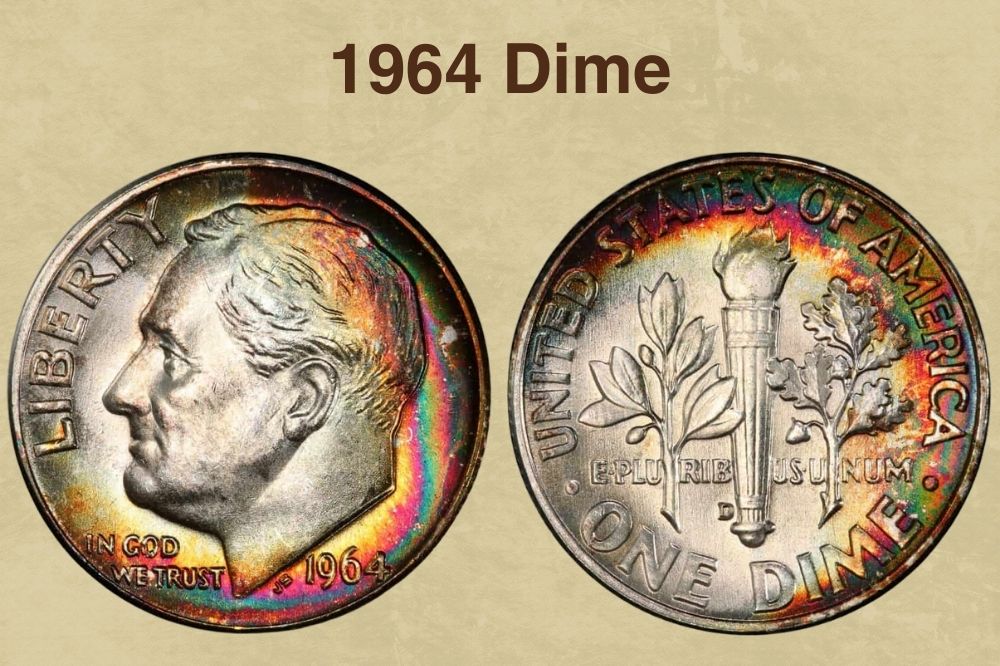
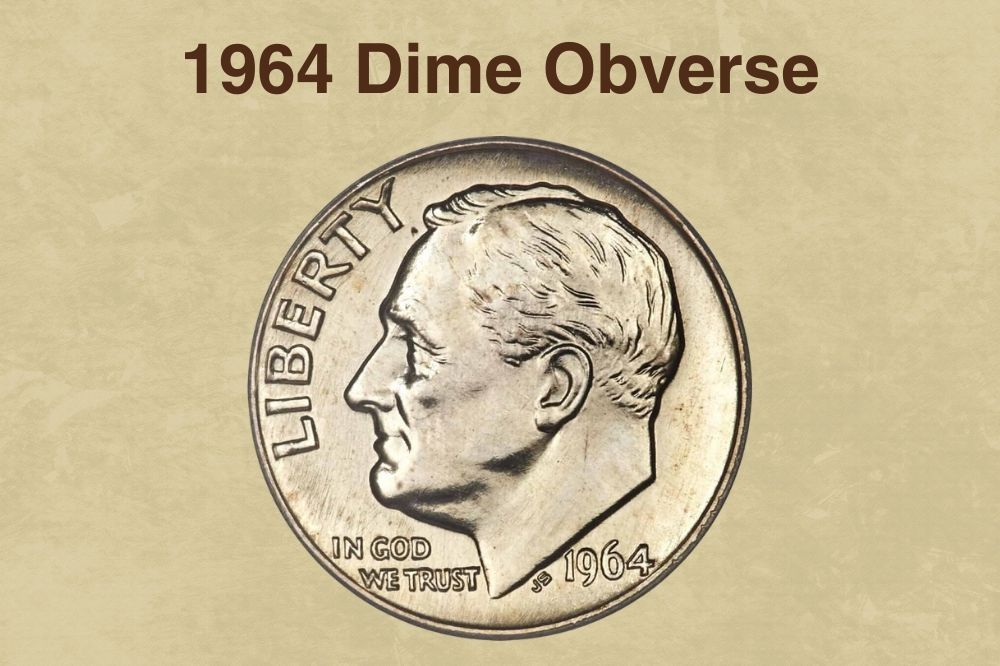
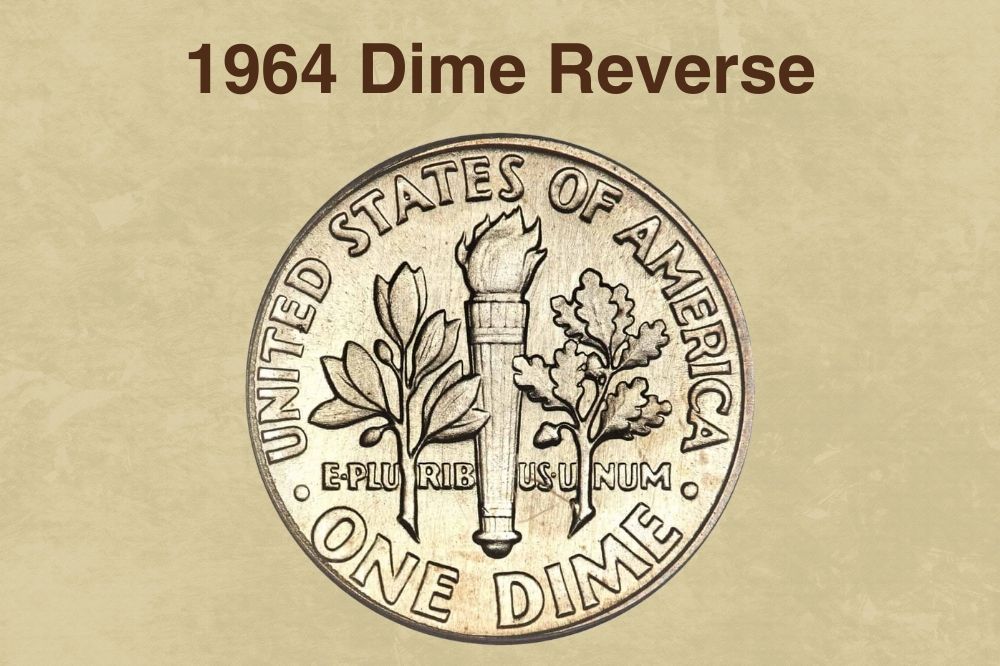
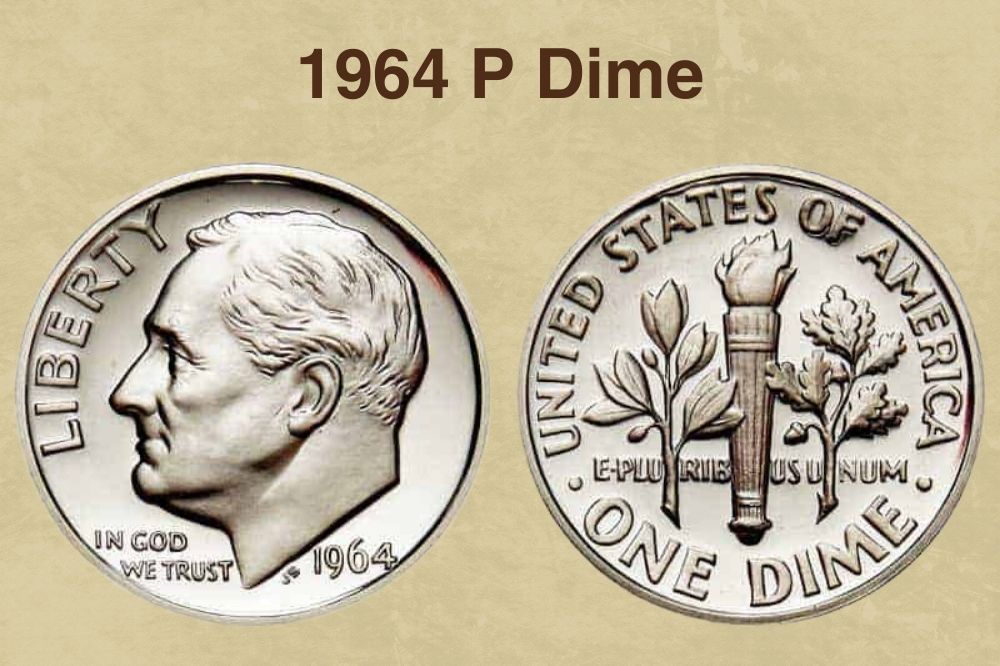
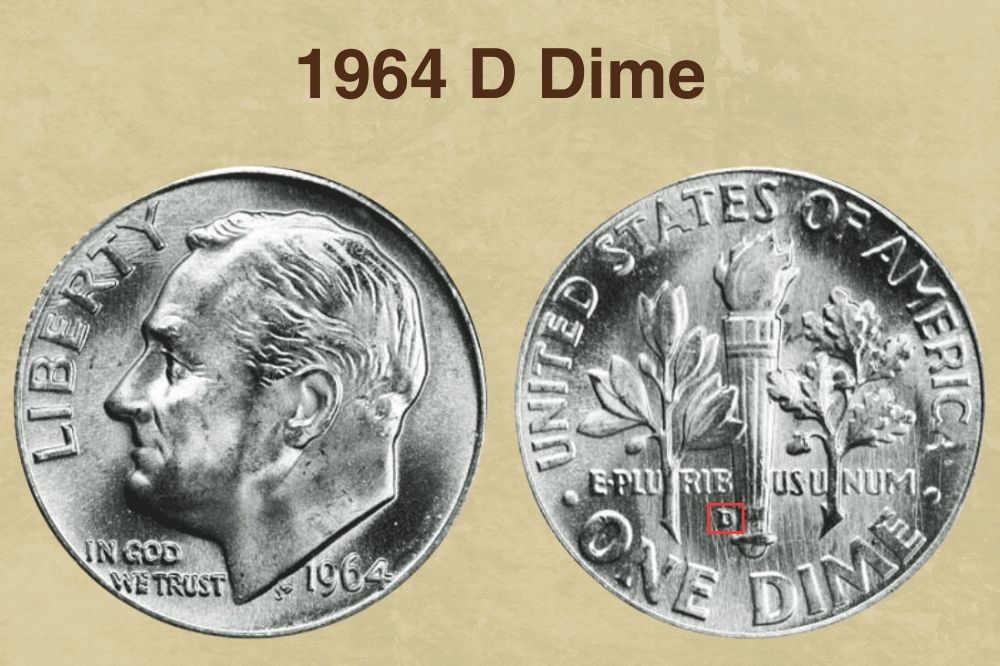
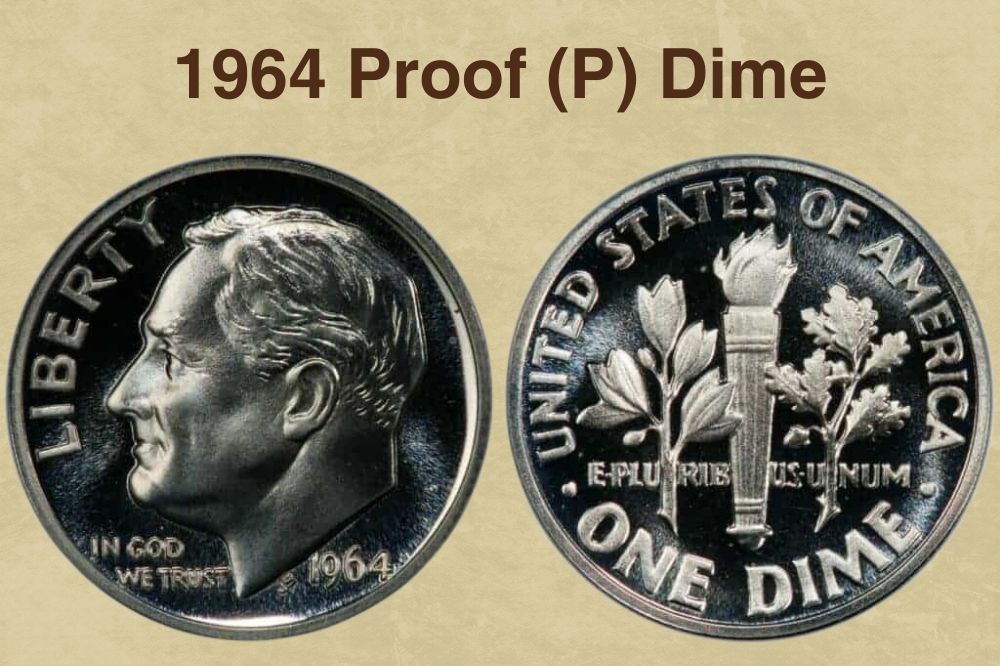
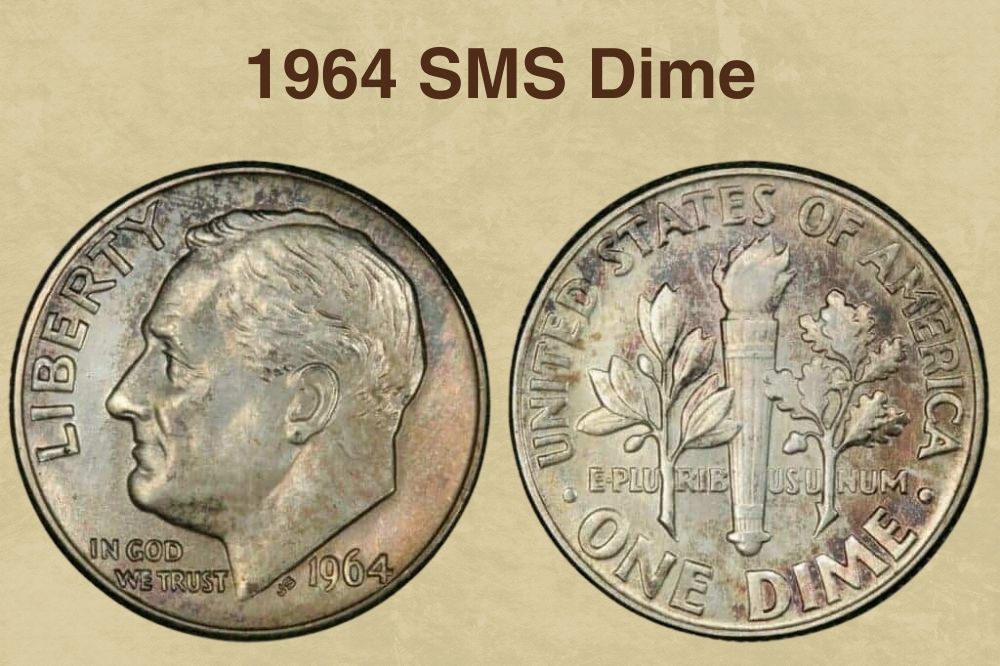
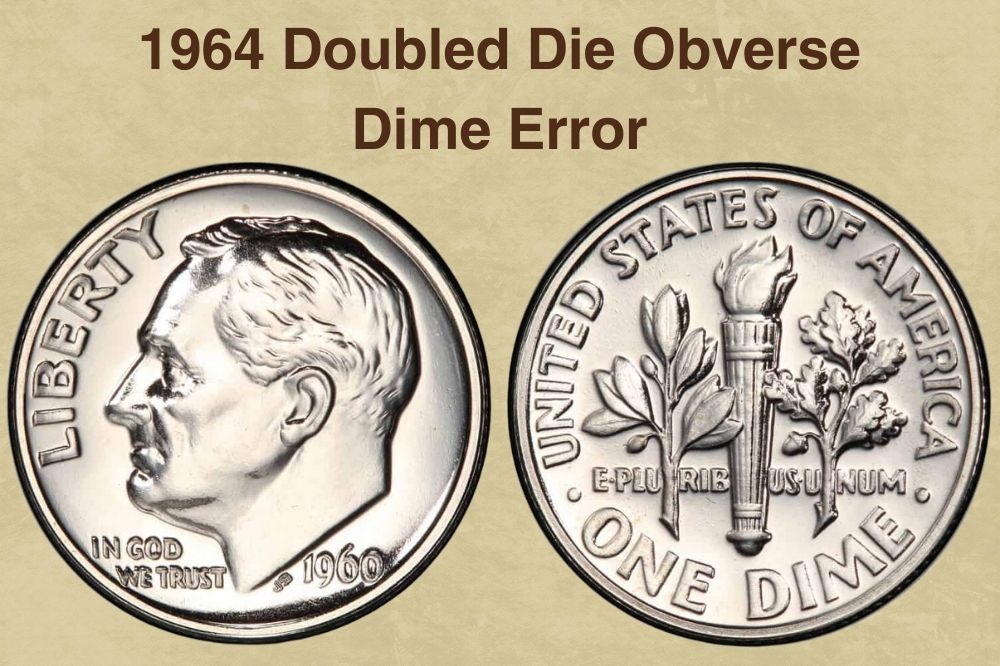
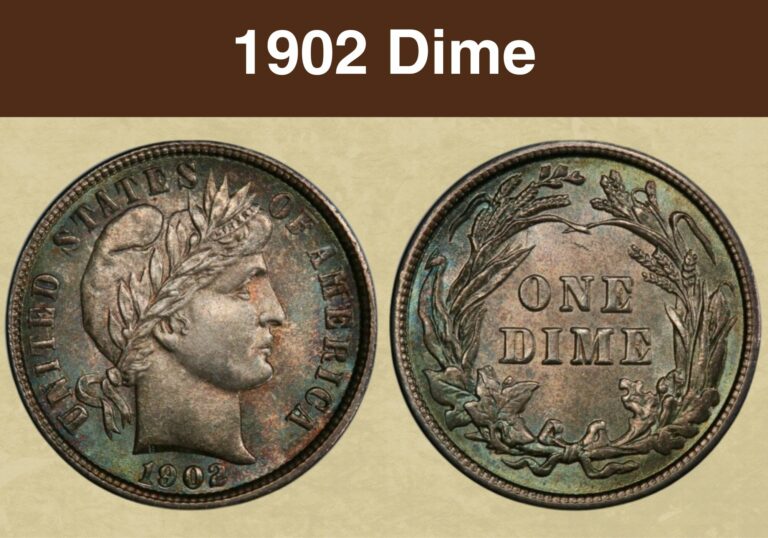
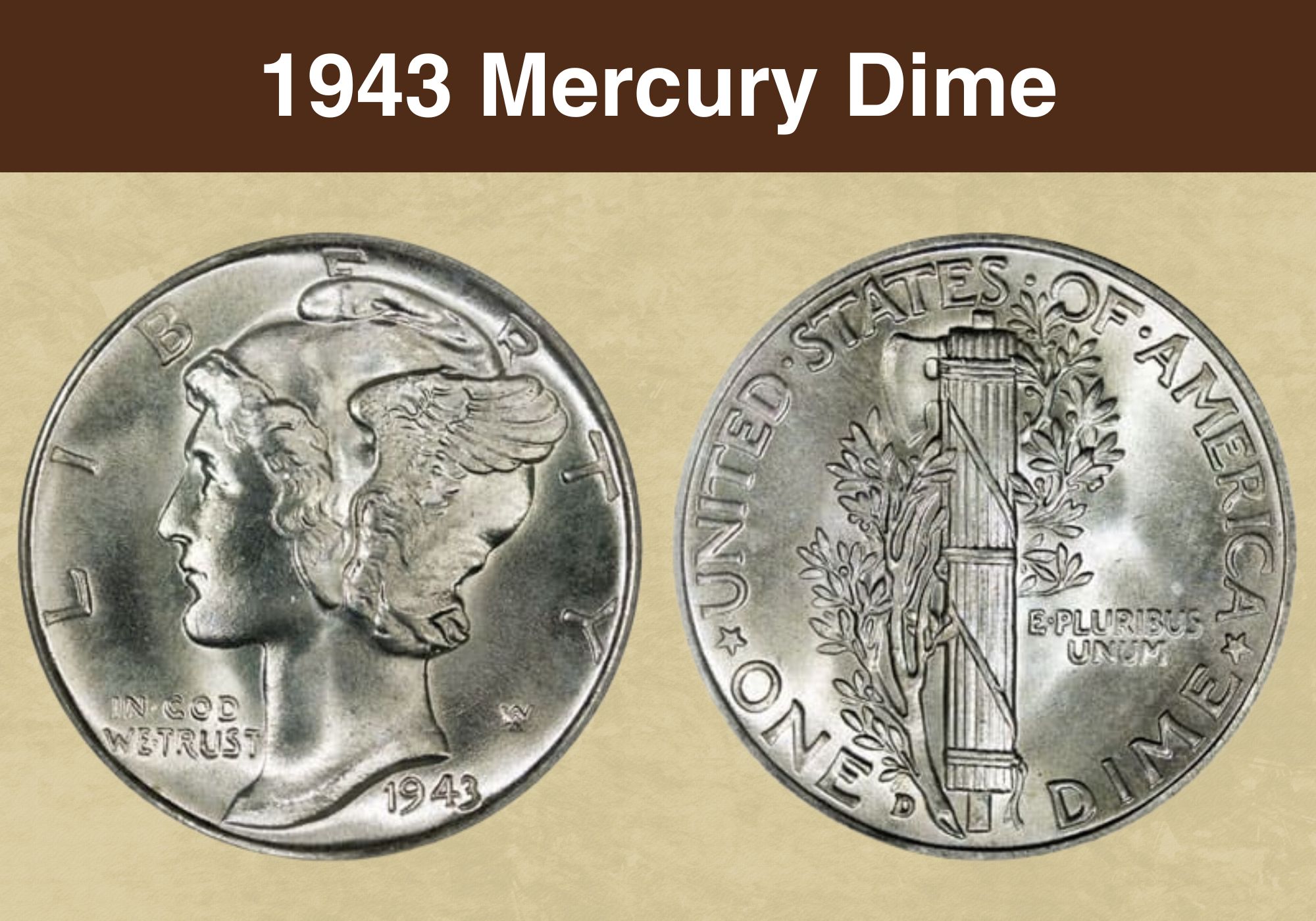
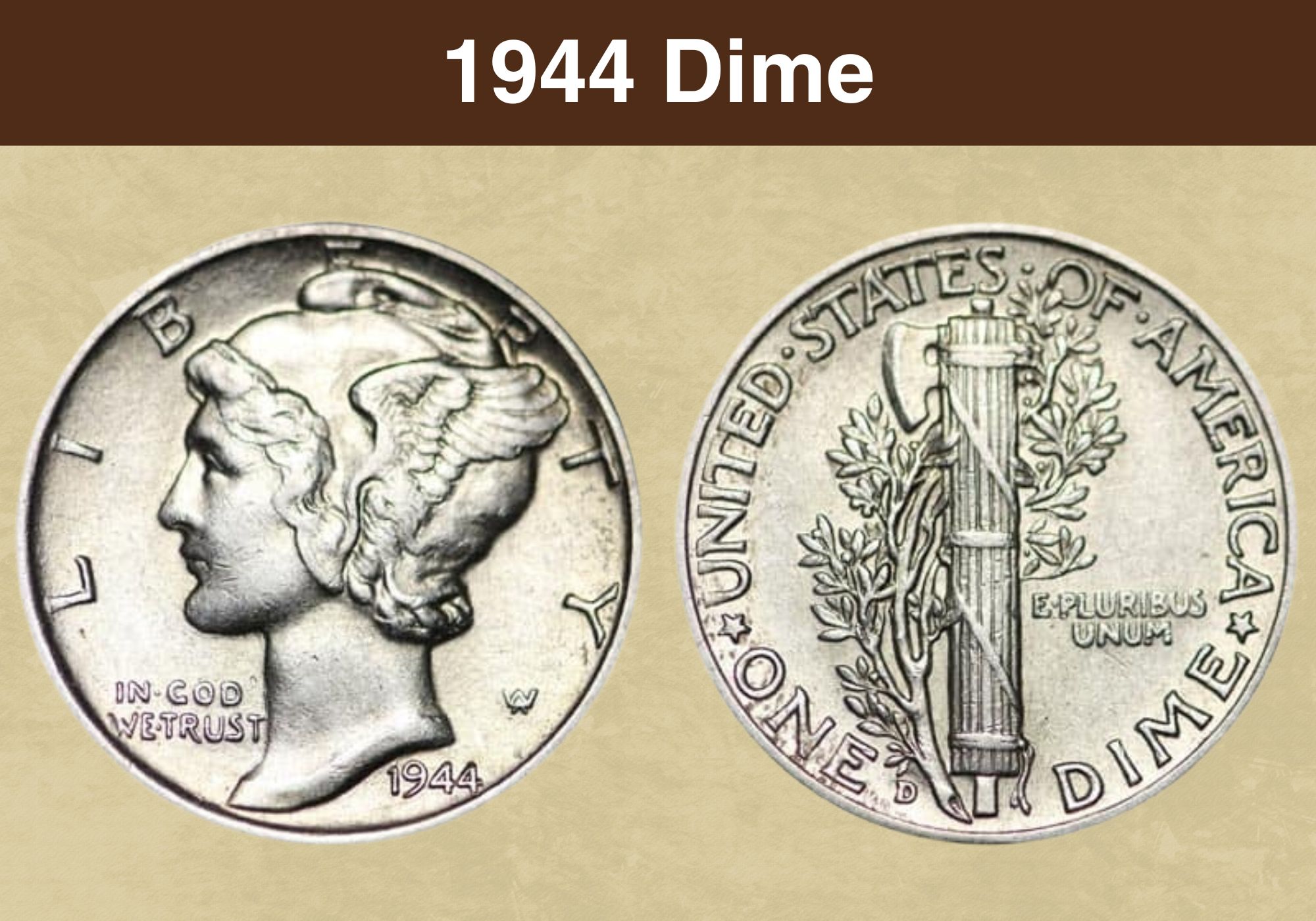
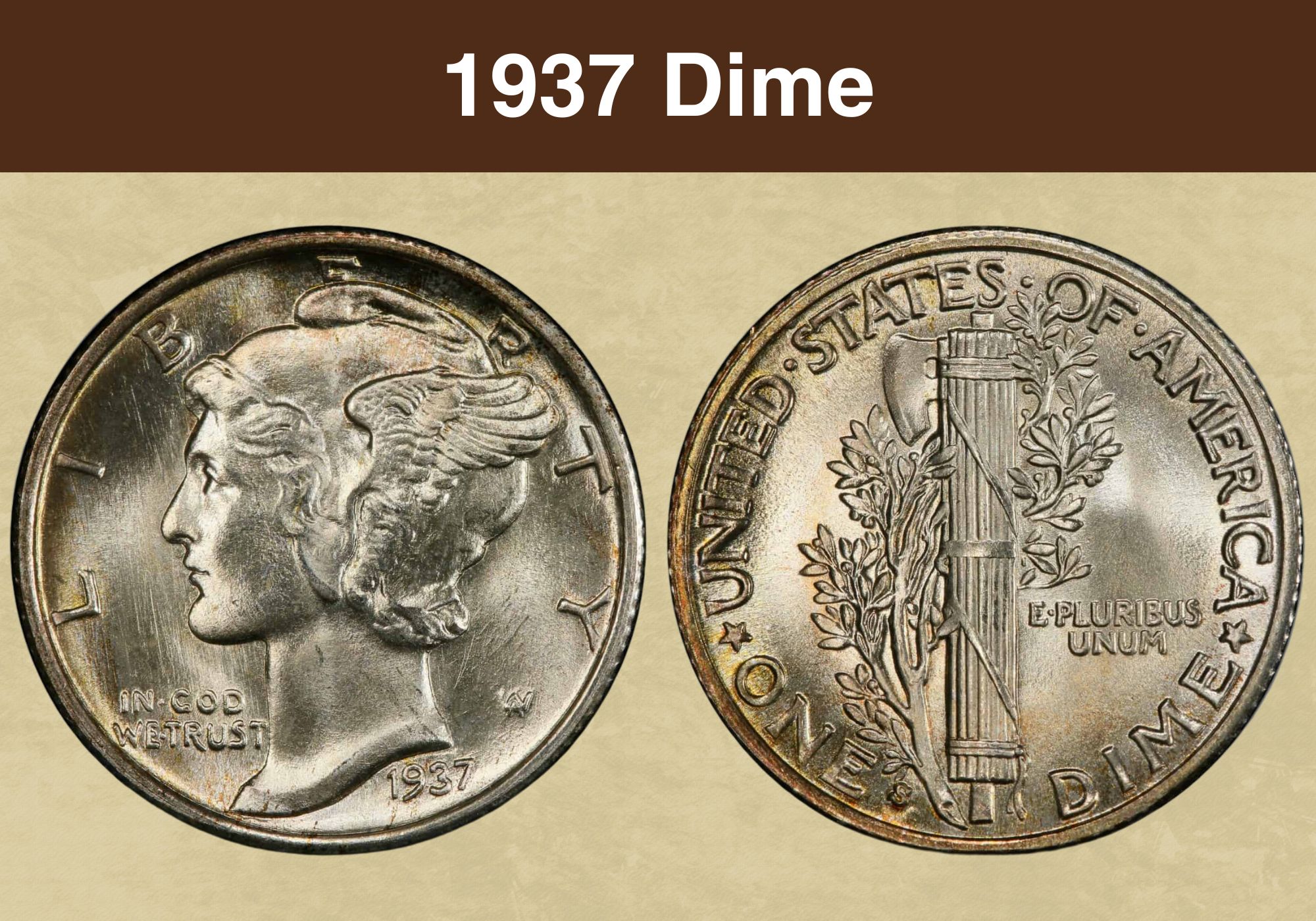
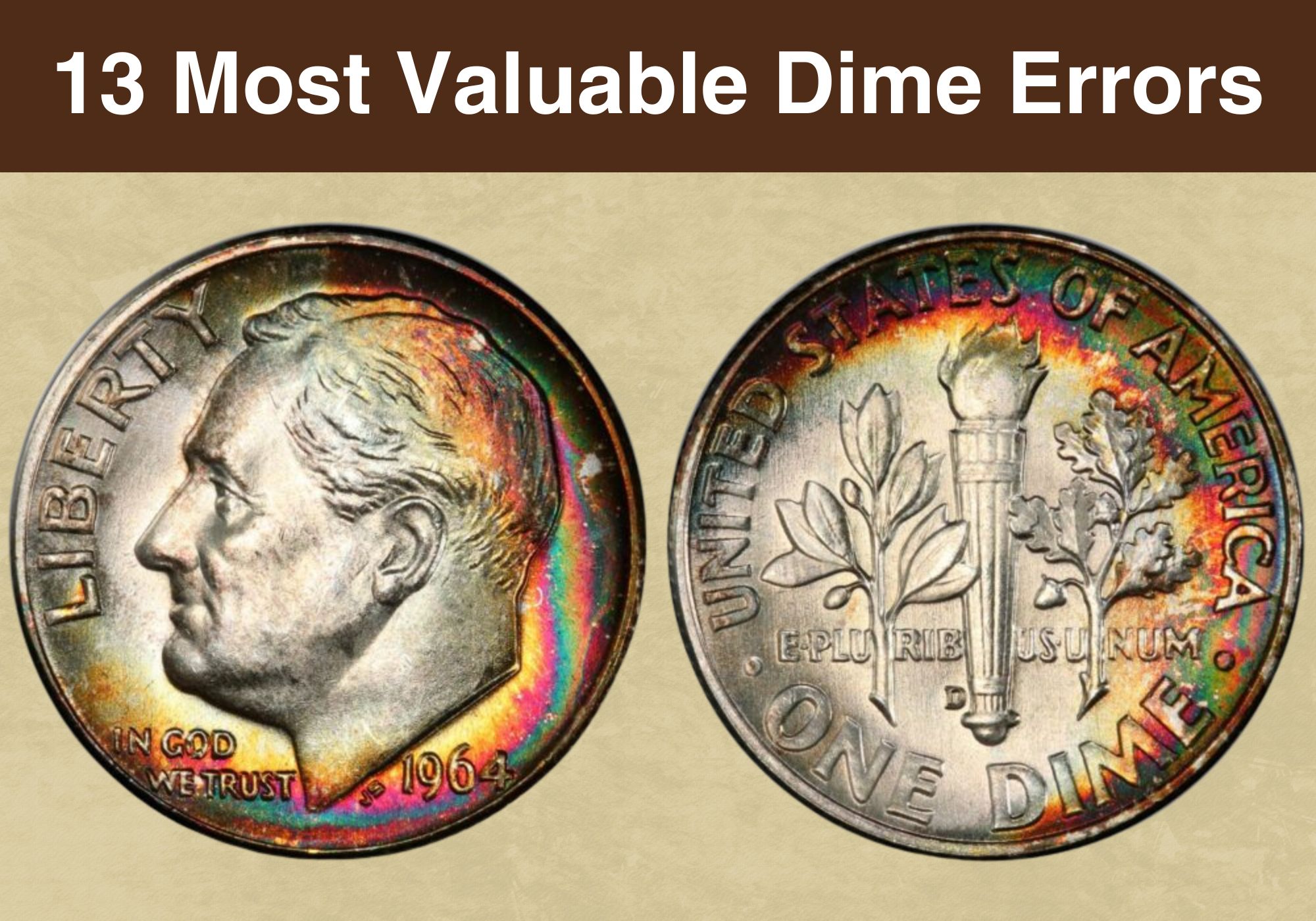
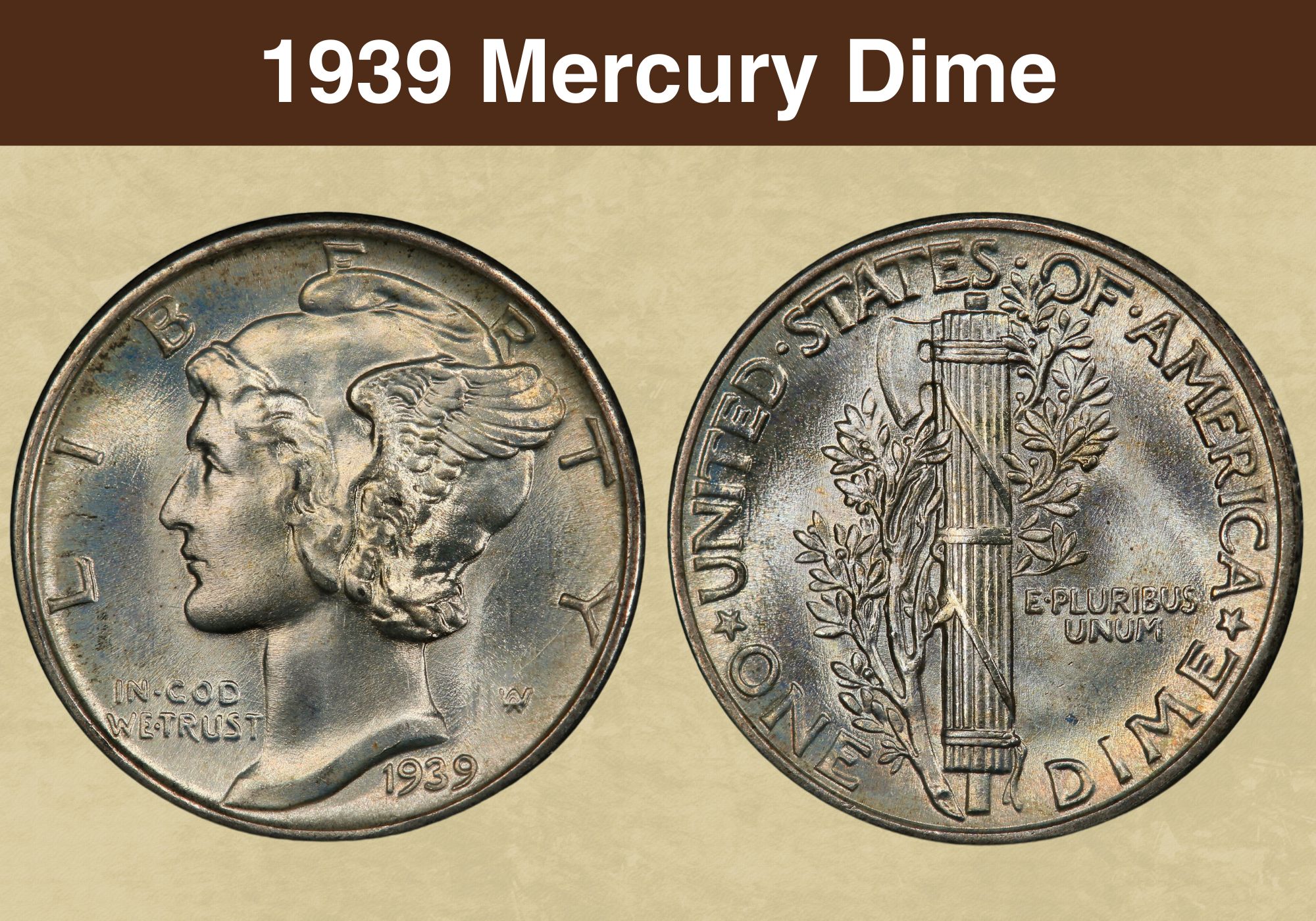
I have a 1964 dime that has a mark on the m in America is this an error.